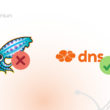Phishing attacks represent one of the biggest cyber threats for companies of all industries and sizes. However, small and medium-sized businesses (SMEs) are particularly vulnerable to this cyber threat. This is mainly due to a lack of resources and knowledge in cybersecurity, making these companies easy targets for criminals.
Phishing attacks involve psychological manipulation to obtain confidential information, which causes immense damage to SMEs. Therefore, the result is often substantial financial and operational losses, harming the organization's development and growth.
Phishing is a cyberattack strategy in which cybercriminals pose as trusted entities to trick users into providing sensitive information such as credit card numbers, passwords, and personal data . Cybercriminals typically carry out this attack through emails, spoofed websites, and text messages, all designed to imitate legitimate services.
The growth of phishing attacks
According to a survey conducted by Statista , despite the growth and popularity of messaging apps and platforms, email remains an essential part of online life. The number of email users reached 4.26 billion in 2022, and is expected to reach 4.73 billion users in 2026. Although many users are aware of the dangers of unknown emails, according to a survey carried out in February 2019 , only 45% of users reported that they avoided opening emails from unknown addresses, highlighting the need to raise awareness about the threat of phishing.
Thus, as it is an attack that does not require large investments, the prevalence of phishing has increased exponentially, with millions of attacks being recorded annually . Data from Kaspersky , released by IT Forum in August 2023, shows that Latin America recorded a total of 286 million phishing attempts in one year. In Brazil, 134 million attempts .
This data is worrying because, between 2021 and 2022, there was a 436% increase in phishing attempts , going from 25 million to 134 million cases. According to the Anti-Phishing Working Group (APWG) , the number of reported phishing attacks reached a new record in 2023, with an average of more than 1 million phishing attempts recorded monthly. In other words, small and medium-sized companies were frequently targeted due to the perception that they are more vulnerable targets.
Small and medium-sized businesses face specific cybersecurity challenges. With more limited budgets, many companies are unable to invest in reliable and robust security solutions, or even hire an IT specialist.
In this context, the financial impact is only part of the problem. Therefore, SMEs also face the loss of trust from customers , who may abandon their relationship with the company after such an incident. The lack of resources to deal with the consequences further worsens the situation, leading many SMEs to close their doors.
Understanding phishing attacks
Effectively combating phishing attacks first involves understanding how they work. Phishing is a form of social engineering in which attackers exploit victims' trust to improperly access sensitive information. These attacks can be generic or specific, focusing on a position or employee within an organization.
Additionally, phishing attacks can be generic , targeting a large number of people, or specific , targeting individuals in key positions within an organization, such as executives or IT professionals. In other words, the adoption of employee protection and awareness tools is essential to avoid this type of approach.
Types of Phishing Attack
There are several types of phishing attacks, each with its own characteristics and execution methods. As mentioned previously, spear phishing is a targeted attack, where the cybercriminal focuses on a specific victim. On the other hand, whaling is an attack similar to spear phishing, but targets high-ranking executives. The objective of this attack is to obtain critical corporate information or cause large amounts of money to be embezzled.
Clone phishing is an attack where the cybercriminal creates a replica of a legitimate message already sent to the victim, changing some details such as attachments or links. In this way, he can lead the victim to a malicious website, especially in cases where the victim is already familiar with the original content.
Among the different types of phishing attacks, spear phishing is particularly dangerous for SMEs. In this type of attack, criminals carry out detailed research on the victim before attacking, collecting data from social networks, company websites or public sources. Thus, with this information, the cybercriminal is able to create extremely convincing content, increasing the probability of success of the attack.
Phishing mechanisms
Phishing attacks employ a variety of mechanisms to deceive their victims, such as using spoofed emails that resemble trusted sources . In these cases, cybercriminals disguise their messages to appear to come from banks, co-workers, or technology companies by including links that lead to fake websites or malicious attachments.
Criminals can also conduct phishing attacks through text messages, social media and phone calls. Regardless of the means used, the objective is always the same: to induce the user to provide sensitive information or carry out actions that compromise the company's security. Thus, the use of new technologies, such as artificial intelligence and deepfake , has made attacks increasingly sophisticated and difficult to detect.
Impact of phishing attacks on SMEs
Phishing attacks have a devastating impact on small and medium-sized businesses , causing both financial and operational losses. For this reason, recovering from an attack can be slow and costly, also causing damage to the company's reputation.
Below, we will discuss in more detail the financial and operational impacts that can be caused by this type of attack.
Financial consequences
The financial impact of phishing attacks can be significant and cause immeasurable damage to companies. SMEs can suffer substantial financial losses from misappropriation of funds, payment fraud and costs related to identity theft.
Additionally, companies may also face regulatory fines for non-compliance with data security standards, as is the case with the General Data Protection Law (LGPD) . In many cases, the total cost of a phishing attack can be so high that it causes the company to close its doors permanently.
In addition to direct losses, phishing attacks generate substantial recovery costs. This includes hiring cybersecurity experts to mitigate damage, restore systems, and implement preventive measures to prevent future incidents. Due to the high cost of these actions, small companies may not be able to complete all the steps, going through a painful and prolonged recovery process .
Operational effects
In addition to financial losses, phishing attacks also cause serious operational impacts on SMEs. The first impact occurs when the approach interrupts services and operations, compromising or disabling the company's systems. This results in lost productivity , delays in the delivery of services and products and even loss of customers.
In addition to disruption to operations, SMEs also face the loss of critical and confidential data. Information stolen during a phishing attack can include financial details, intellectual property, customer data, and more. The loss of this information compromises the company's security and puts customer trust and image in the market at risk.
Preventive measures against phishing
While phishing attacks pose a significant and damaging threat, there are some steps SMBs can take to protect their operations and reduce the risk of falling victim. Prevention involves a series of approaches that help the company protect itself and avoid the damage caused by this cyber threat.
Employee training and awareness
training and awareness are the first line of defense against phishing attacks. SMBs need to invest in security awareness programs , helping their employees recognize and avoid phishing emails, suspicious links, and other attack vectors.
In addition to theoretical training, it is essential that phishing simulations to test the readiness of employees. These simulations evaluate the effectiveness of training and identify areas of vulnerability that need to be strengthened. Implementing a culture of security helps SMBs significantly reduce the risk of successful phishing attacks.
Implementation of security technologies
Complementing employee training involves implementing advanced security technologies to detect and prevent phishing attacks. Tools such as intrusion detection systems, email filters, and malware protection software are key to identifying and blocking phishing attempts before they cause substantial damage.
Another very effective measure is the implementation of multi-factor authentication (MFA) . This system requires users to provide two or more identity verification methods to make unauthorized access difficult, even if login credentials are compromised.
Examples of SMEs hit by phishing
Although it is possible to understand the risks associated with phishing, viewing the impacts through real examples is very enlightening. Several SMEs around the world have already suffered the devastating effects of phishing attacks, resulting in substantial financial losses and irreparable damage to their market reputation.
Recurring cases and statistics
The data on the frequency and severity of phishing attacks is very worrying, especially in the context of SMEs. Studies indicate that one in three companies of this size has been the target of a phishing attack, resulting in significant financial losses.
“State of the Phish survey , carried out by Proofpoint, found that around eight in 10 Brazilian companies (78%) reported having suffered at least one successful email phishing attack in 2021. Of these companies, 23% suffered some financial impact.
The scope of this type of attack is unlimited and usually affects even large companies. For example, according to the APWG Phishing Activity Trends Report, Microsoft was the most targeted company , receiving 38% of global phishing attacks in the first quarter of 2023.
Furthermore, another survey carried out by monitoring company Appgate revealed that phishing accounts for 61% of fraudulent activities that are neutralized by the company's security operations center. These data show that phishing maintained its predominance, which was already indicated in 2023, in the following periods.
This data highlights the need to implement preventive measures in SMEs. If, even in companies with a consolidated and robust cybersecurity strategy, these attacks can be effective, the risk for smaller companies is even greater. SMEs that do not invest in cybersecurity end up running the risk of becoming victims of these threats, with extremely catastrophic consequences.
Combating the Phishing Threat with a Consolidated Strategy
Phishing attacks represent a growing threat to SMBs, with operational and financial consequences that can be devastating. Implementing a regular training , raising employee awareness and using security technologies are fundamental steps to maintaining the protection of your data and networks.
By implementing proactive measures, it is possible for SMEs to minimize the risk of suffering from these threats and protect their most valuable assets, as well as their positioning in the market. In this sense, it is essential to adopt strategies that help protect this information and ensure security within an increasingly challenging digital scenario.
Count on the help of robust and reliable tools to maintain your organization's security in the face of these threats. The use of intelligent and customizable technological resources can make all the difference in your protection strategy.











